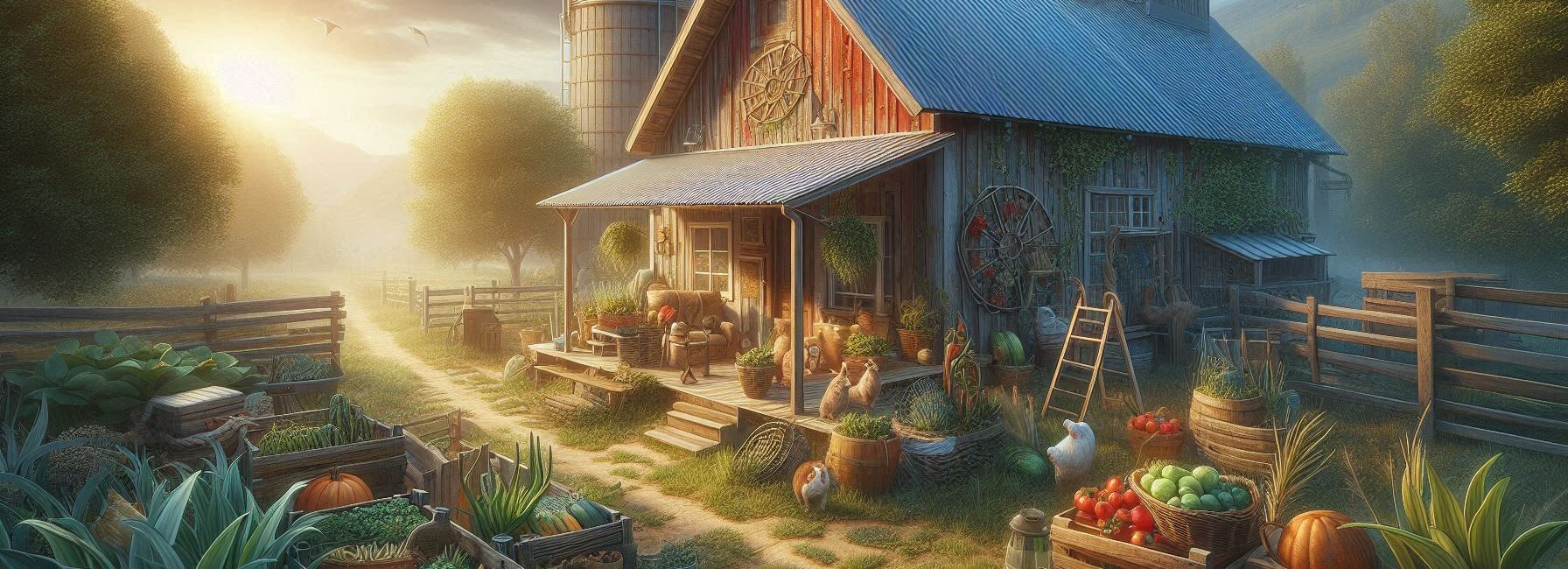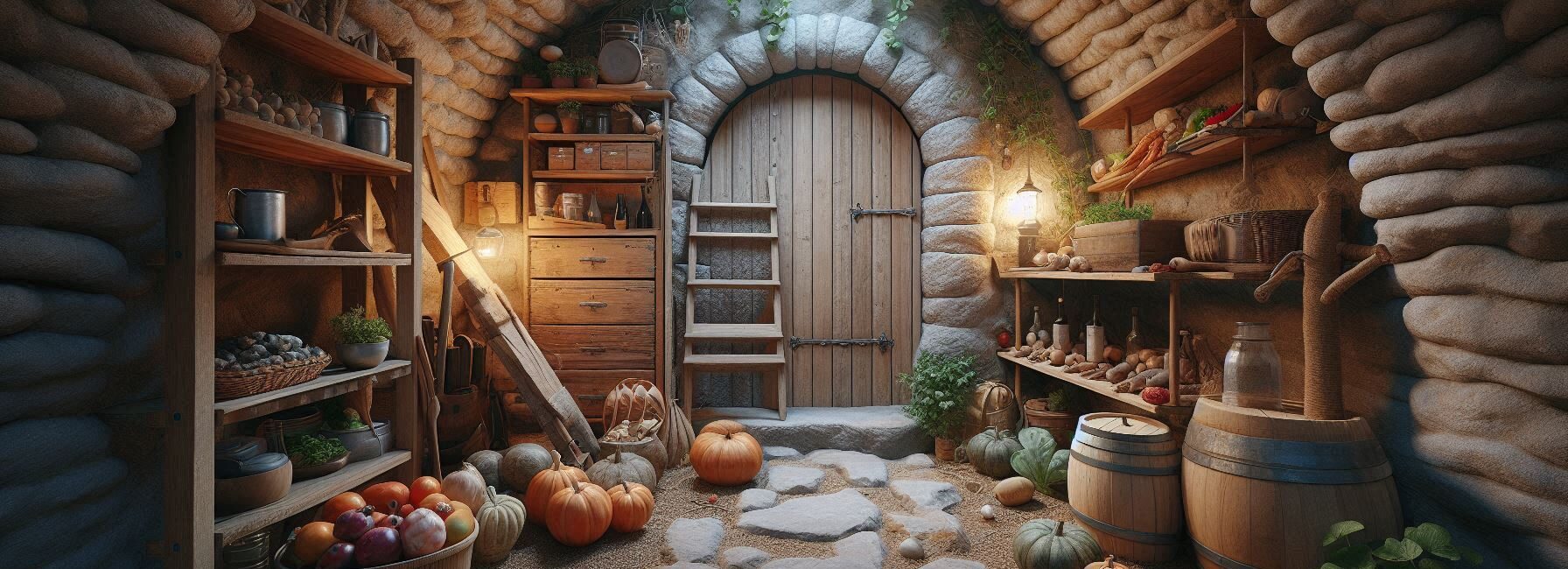Please Note: This post may contain affiliate links. If you click one of them, we may receive a commission at no extra cost to you. As an Amazon Associate, I earn from qualifying purchases.
Last Updated on November 1, 2025 by Kevin Collier
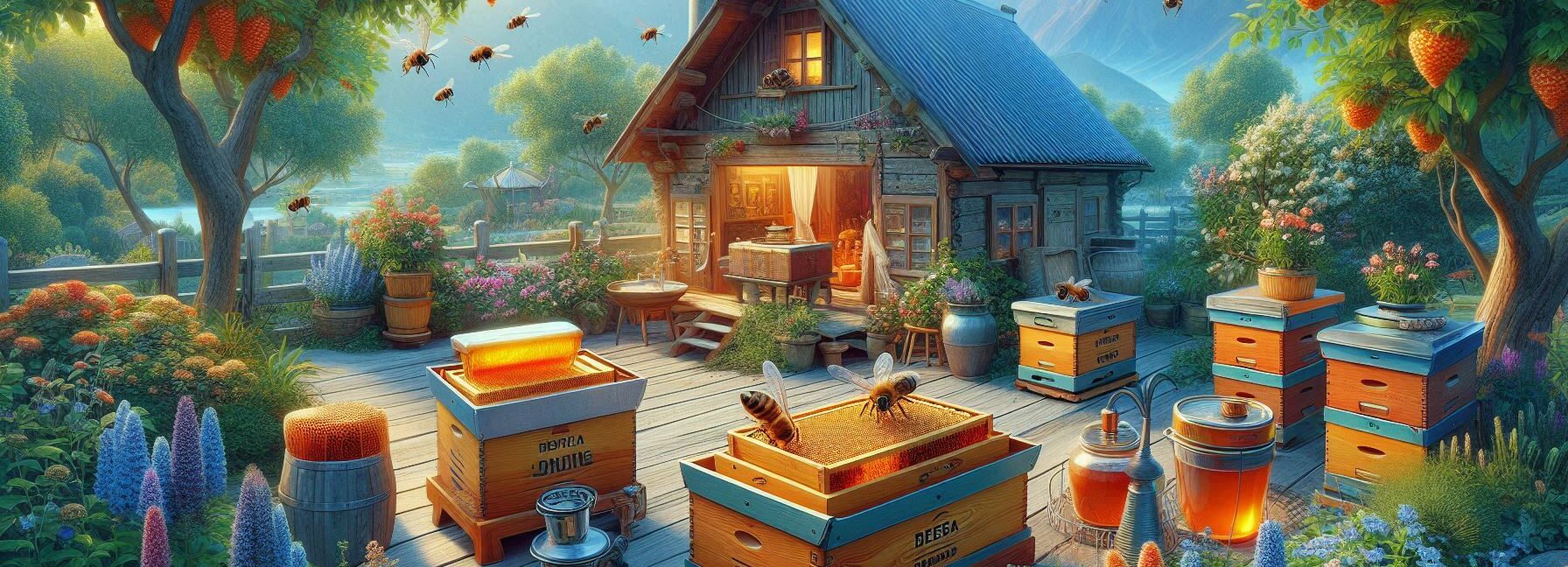
Top Takeaways and Key Concepts
Here are the top 5 actionable takeaways to help you get started with beekeeping on your homestead:
- Educate Yourself First: Study honeybee biology, hive management, and local regulations before acquiring bees.
- Choose the Right Hive: Decide between Langstroth, top-bar, or Warre hives based on your climate and goals.
- Order Bees Early: Place orders for bees in winter to ensure availability for spring installation.
- Gather Essential Equipment: Invest in a smoker, protective gear, hive tools, and a bee brush.
- Seek Local Mentorship: Join a local beekeeping association for hands-on guidance and support.
For a comprehensive guide on starting beekeeping, you can refer to this resource.
So, you're getting into beekeeping! That's great! Just think about all the buzzing friends and the wonderful, sticky honey that is waiting for you. You have a tiny farm in your backyard. But wait a minute! Before you put on your costume and start dancing with the bees, let's talk about how to make this trip go smoothly and be entertaining.
You don't have to jump in without thinking. That could really turn into a mess. Picture a swarm of bees and you acting like a cartoon character. Oh no! Let's keep it simple, then.
Research
Do some research first. There are a lot of books and videos out there. A local beekeeping group can be quite useful, too. It's like having a lot of bee friends before you even get bees! Talking to other people who have been through it can help you feel better.
Location
After that, choose a decent place for your hives. Bees appreciate sunny places, but they also like places that are a little shady. Like us, they don't want to spend all day in the sun. A lovely garden area is fantastic. And you'll want flowers close by. Bees need to eat! Picture inviting your pals around for a picnic. You wouldn't want to let them go hungry, would you?
Gear
*** Shop for Survival Gear - Tools - Kits ***
Survival Gear - Bags and Backpacks - Knives - Boots/Footwear - Communication
Outdoor Cooking - Gloves - Hydration - Dry Boxes - Water Filtration Systems
Tents - Sleeping Bags - First Aid Kits - Multi-Tools - Flashlights - Fire Starters
Navigation - Survival Food - Night Vision - Headlamps - Stun Guns - Binoculars
Let's talk about gear. That bee costume is really important. You don't want to feel like a snack; you want to feel like a bee ninja. You will be safe while you learn the ropes if you wear the right clothes, gloves, and a veil. Keep in mind that even those who have kept bees for a long time get stung. It's part of the job, but the suit helps!
Be careful when you start. Bees can sense how you feel. They will be calm if you are. They don't want to hurt you. They just want to be bees. Do it slowly when you open the hive. Say “hello” to them first. Respect is the key.
If you want to, you can name a few of the bees and get to know them. How about “Buzz” or “Honey Pot”? Just don't get too close. You might be surprised by them.
You'll soon see those magnificent honeycombs, and you might even get to taste some honey. That first drop of honey that was fresh? Oh, it's so good! You'll be so proud!
So, take a deep breath, enjoy this journey, and remember that every beekeeper started where you are today. You're going to do fantastic! Buzz on, buddy!
Understanding Why You Want Bees

First things first: why do you want bees? Is it because of their sweet honey? The joy of being one with nature? Or maybe you're just sick of paying too much for honey at the store. Have you seen how much it costs? They act like we have a lot of money!
If you raise bees, you'll not only obtain fresh honey, but you'll also help pollinate your garden. Did you realize that bees make around a third of the food we eat?
Yes, that's right! Our choices of fruits and vegetables would dwindle faster than my desire to clean up the garage if we didn't have these little buzzers.
Picking the Right Place
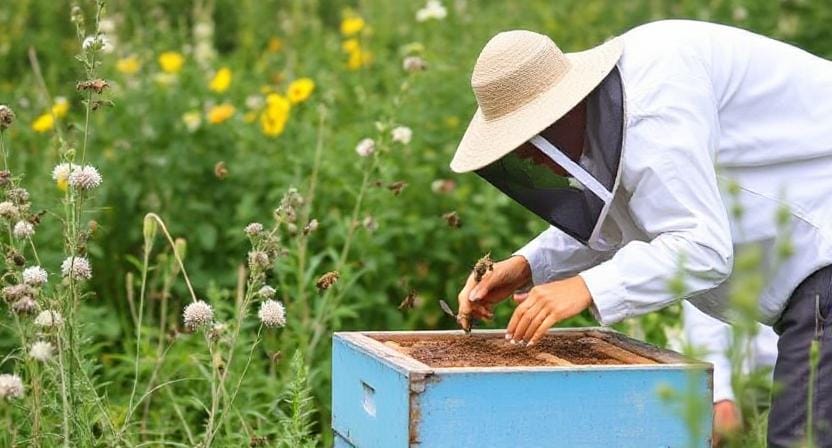
Let's talk about where you live, because even bees need a place to live. You want a place that gets a lot of sun but is protected from high winds. Bees are sensitive, so don't put any pressure on them. A south-facing spot is good since it helps keep the hive warm in the winter.
Also, think about how close you are to water sources. Bees require water to be hydrated and keep their hives at the right temperature. If you have a pond or birdbath nearby, that's great! Just make sure there aren't any fish nearby. They might get jealous of all the noise.
And speaking of places, stay away from places where kids play football or dogs run free. Trust me, no one wants a dog in a tutu chasing bees!
Choosing Your Beehive
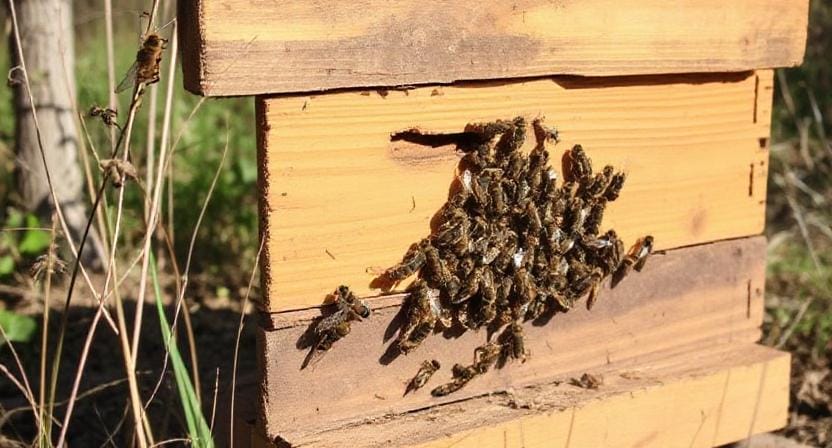
Now comes the fun part: picking the type of hive you want. There are a lot of different types, but Langstroth hives and Top-Bar hives are two of the most popular.
The Langstroth hive is like an apartment building for bees. It features frames that can be taken out so that inspections and honey harvesting are easy. On the other side, Top-Bar hives look more like an open concept design. The bees create their comb on their own, without any help from annoying people (you).
I chose a Langstroth hive because I loved the notion of having frames that could be taken out. Plus, it sounds way cooler when I tell my pals, “Yeah, I manage multiple colonies in my Langstroth setup.”
Getting Your Bees

Next, you need to get your bees! You can either catch natural swarms (not a good idea unless you're feeling really daring) or buy them from trusted sources. A lot of local beekeeping groups sell packages or nucs (nucleus colonies), which are simply beginning kits with happy humming women inside.
When you choose your package or nuc, make sure the bees and queens seem healthy and ready to reign their kingdom. If they seem tired or grumpy, like I do before I have my morning coffee, keep looking!
Oh! And if someone attempts to sell you “killer bees,” simply walk away slowly while whistling like you don't care. You don't need that type of negativity in your life.
Learning the Basics of Beekeeping
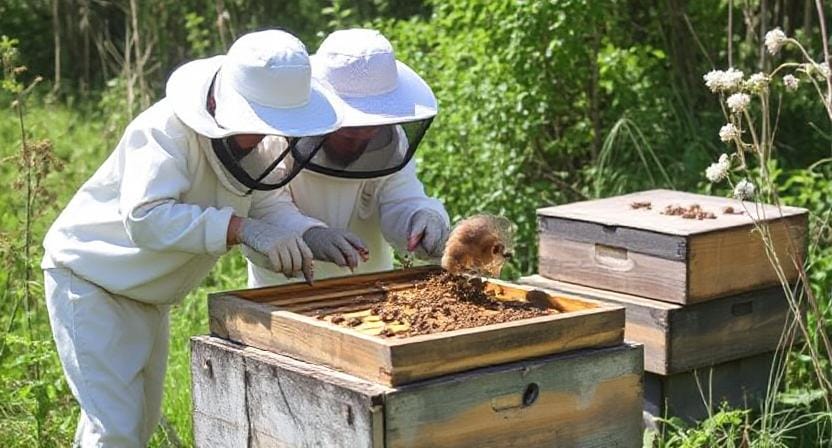
It's important to acquire some basic skills before you jump into the joys of beekeeping. You might want to look into attending classes from local beekeeping clubs or online. You'll be glad you did when you try not to freak out during your first hive inspection.
Some important abilities are knowing how to check hives without making a mess (bees don't like surprises), spotting symptoms of disease (which sounds scarier than it is), and knowing how bees act (like why they follow you around all the time).
Also, reading books by expert beekeepers might help you understand this interesting activity better—or at least make you laugh when things go horribly wrong!
Taking Care of Your Hives

Once everything is set up and your buzzing friends have moved in, you need to take care of things. Regular checks will help make sure that everything is working well in those busy tiny households. Watch out for parasites like Varroa mites; they're like party crashers who ruin all the enjoyment.
If there isn't a lot of natural nectar available in early spring, you can also give them sugar syrup, which is like feeding them breakfast in bed! And don't forget that patience is important because things don't always go as planned. It's like attempting to bake cookies without burning them every time.
How to Get Honey Like a Pro
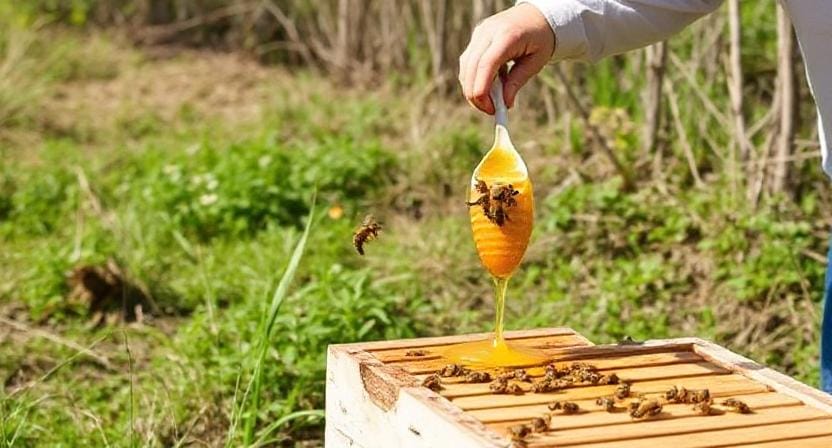
Finally, it's time to do everyone's favorite thing: collect honey! This usually happens in the late summer when the frames are full and covered in golden sweetness. Put on your suit and get ready to look silly, because that's half of the fun. Then, using a smoker (it soothes those fierce girls), carefully take out frames filled with honeycomb.
Getting honey out of the combs can be as easy as using an extractor or smashing the combs right into jars. Just remember not to wear white jeans while you're doing this unless you want to make abstract art!
And what do you do with all that liquid gold? You can share it with friends or keep it all for yourself. It's up to you. But you might want to save some for pancakes too!
Frequently Asked Questions
Do I need prior experience before getting bees?
Studying bee behavior, hive management basics, and legal requirements helps prevent costly early mistakes and improves colony success.
What type of hive is best for beginners?
Langstroth hives are common for beginners because removable frames make inspections and honey harvesting easier.
When should I order bees for a new homestead setup?
Orders should be placed during winter to secure packages or nucs for spring installation.
What gear do I need to start beekeeping?
A veil, protective jacket or suit, smoker, hive tool, and bee brush form the essential starter kit.
How do I choose a good hive location?
Select sunny but lightly shaded spots with wind protection, nearby flowers, and a clean water source.
Are mentors helpful for new beekeepers?
Local clubs and experienced keepers provide hands-on guidance, regional insights, and help troubleshoot challenges.
Can I harvest honey in the first year?
Most new colonies focus on growth their first season, so major honey yields typically appear in the second year.
Suggested Resources:
Beekeeping Basics
https://www.beekeeper.org/beekeeping-basics
The Complete Idiot's Guide to Beekeeping
https://www.penguinrandomhouse.com/books/197118/the-complete-idiots-guide-to-beekeeping-by-howard-r-mcclure/
Beekeeper's Handbook
https://www.amazon.com/Beekeepers-Handbook-Diana-Sammataro/dp/1118051018

Kevin Collier is a seasoned survivalist and expert in prepping and homesteading, contributing to WiseSurvive.com. With a deep-rooted passion for self-sufficiency and outdoor survival skills, Kevin shares practical advice, strategies, and resources to help individuals prepare for any challenge. His informative articles cover a range of topics, from essential survival techniques to sustainable living practices, empowering readers to thrive in any situation. Whether you're a novice or a seasoned prepper, Kevin's insights will inspire you to take charge of your readiness and build resilience for the future.



